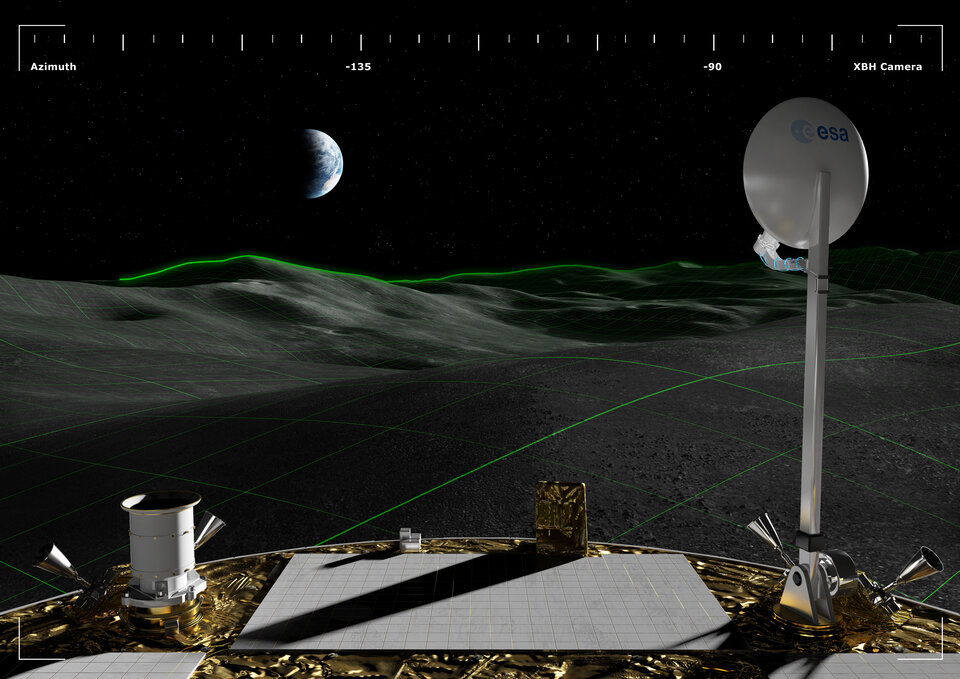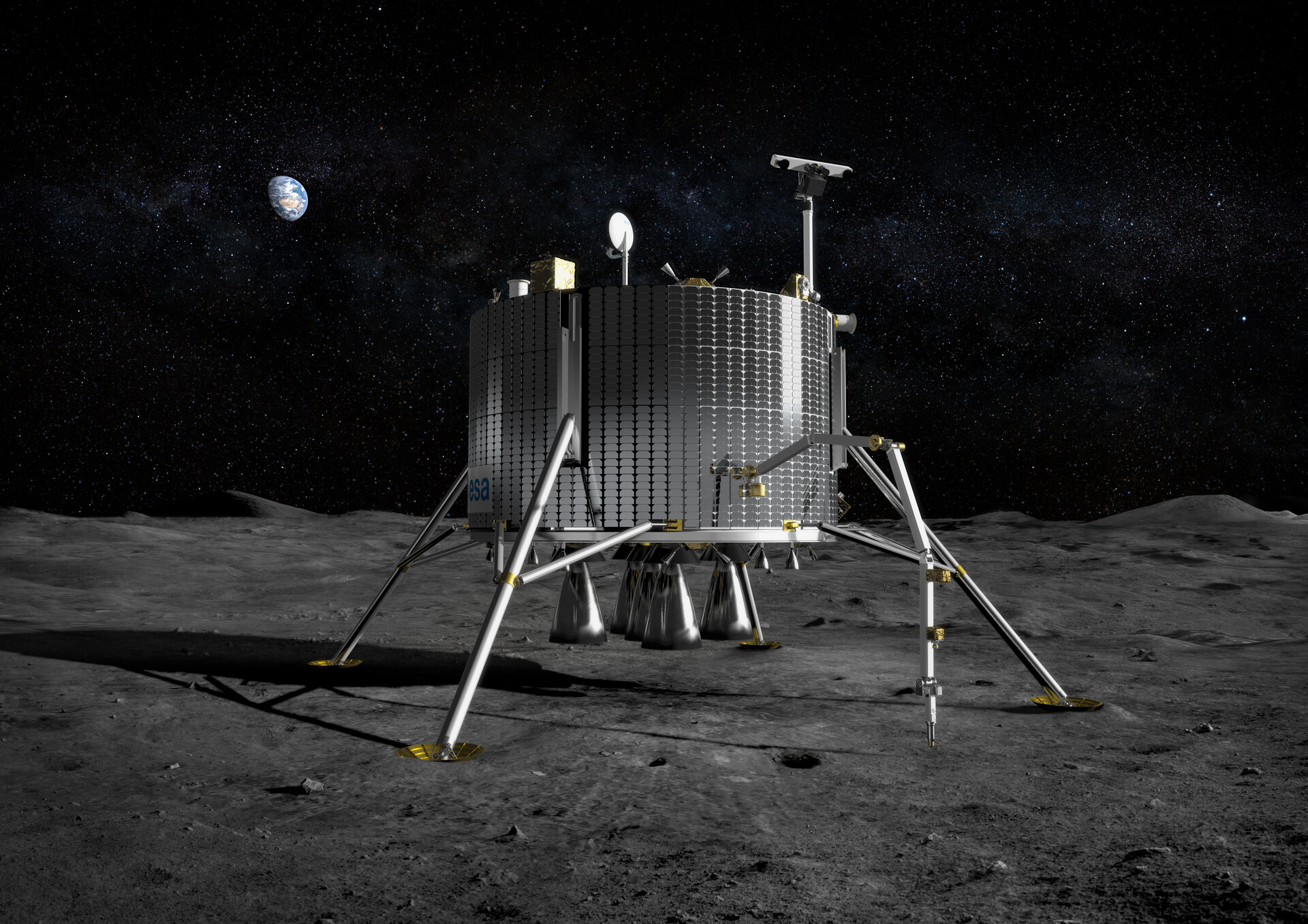Lunar Lander on the surface
Once Lunar Lander is on the Moon, it immediately deploys its high-gain antenna so that it can communicate with its terrestrial controllers.
Communications are established directly with its home planet without relying on a relay orbiter, which means there are periods of no contact when Earth sets below the horizon.
Throughout the descent, the lander will have stored a vast amount of data, which will be transmitted to Earth once communications are established, confirming achievement of its primary technology demonstration objective.
A second priority is deploying the camera mast to reconnoitre the local terrain, specifically the horizon. Surface cameras will identify features that could threaten its power supply by obscuring the Sun.

The mission continues by activating the instruments, relying on Lunar Lander’s robotic arm to deploy some elements. The Mobile Payload Experiment, provided by the DLR German Aerospace Center, begins operations. Other instruments analyse soil samples retrieved with the robotic arm.
The arm and the soil analysis are controlled from Earth when the Lander is in direct view. When Earth is below the horizon, Lunar Lander will store the data from the operating instruments for later transmission.
Depending on the landing site and topography, the craft will experience short periods of darkness. Brief eclipses caused by boulders or distant peaks require that it conserves resources, keeping energy requirements to a minimum and preserving the batteries.
By surviving short periods in shadow, Lunar Lander will be able to continue operating for longer. The goal is for the mission on the surface to last at least three months.




